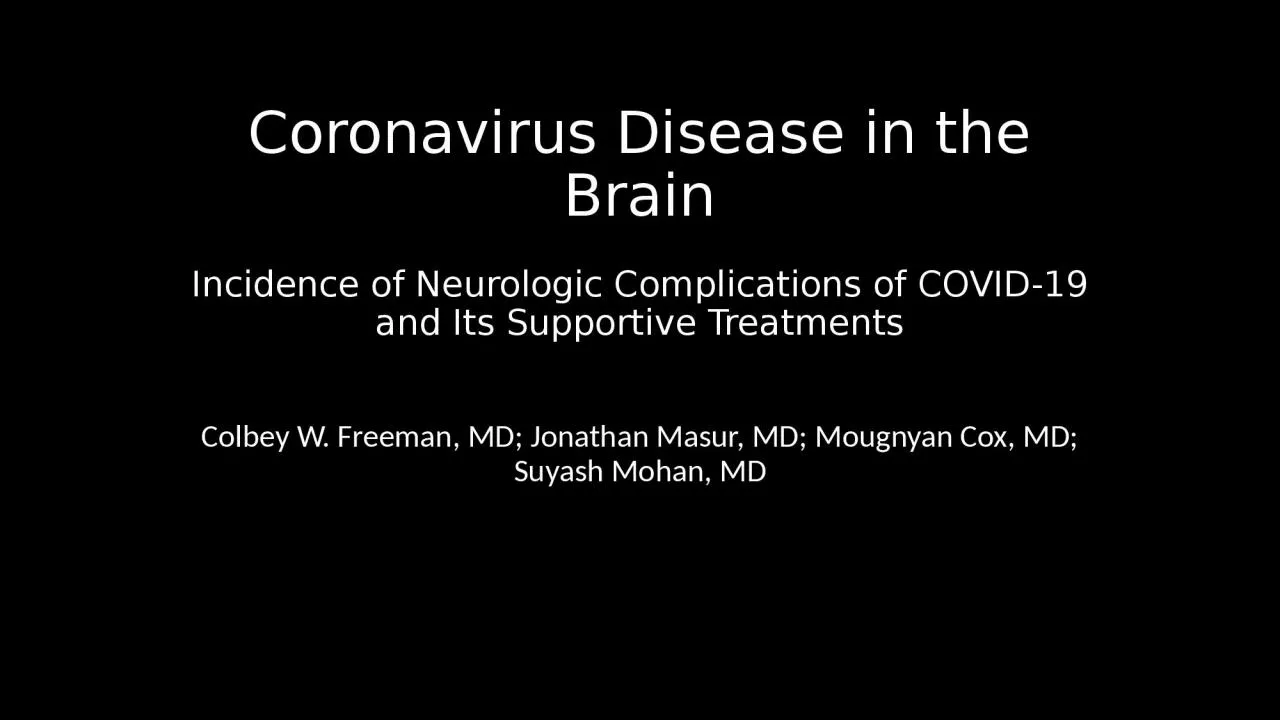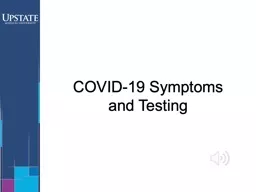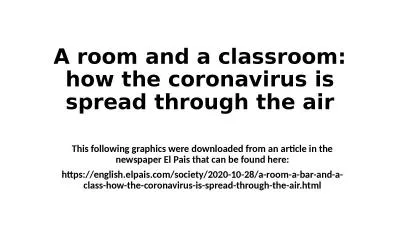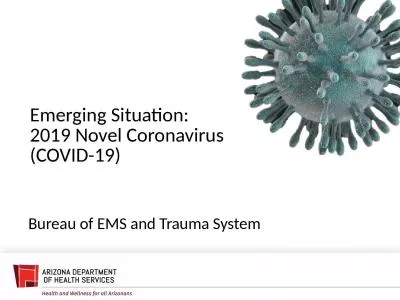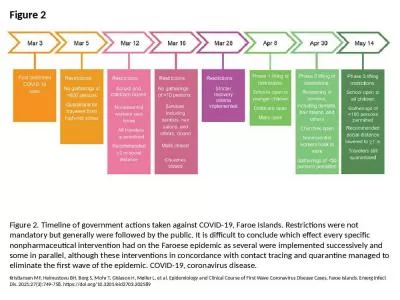PPT-Coronavirus Disease in the Brain
Author : ella | Published Date : 2022-07-13
Incidence of Neurologic Complications of COVID19 and Its Supportive Treatments Colbey W Freeman MD Jonathan Masur MD Mougnyan Cox MD Suyash Mohan MD Background
Presentation Embed Code
Download Presentation
Download Presentation The PPT/PDF document "Coronavirus Disease in the Brain" is the property of its rightful owner. Permission is granted to download and print the materials on this website for personal, non-commercial use only, and to display it on your personal computer provided you do not modify the materials and that you retain all copyright notices contained in the materials. By downloading content from our website, you accept the terms of this agreement.
Coronavirus Disease in the Brain: Transcript
Download Rules Of Document
"Coronavirus Disease in the Brain"The content belongs to its owner. You may download and print it for personal use, without modification, and keep all copyright notices. By downloading, you agree to these terms.
Related Documents

